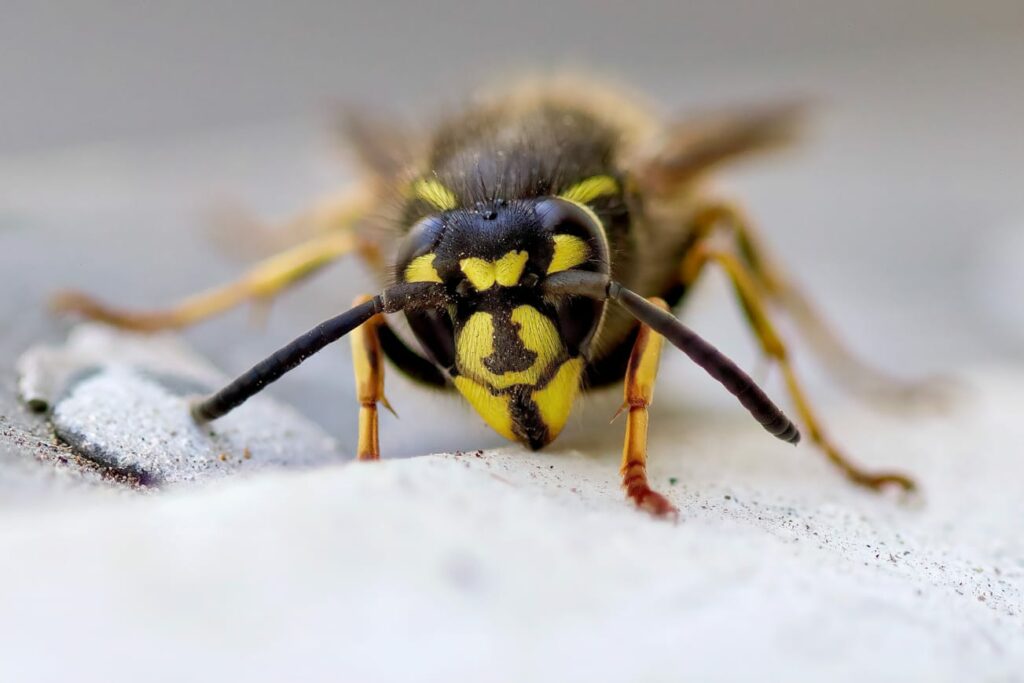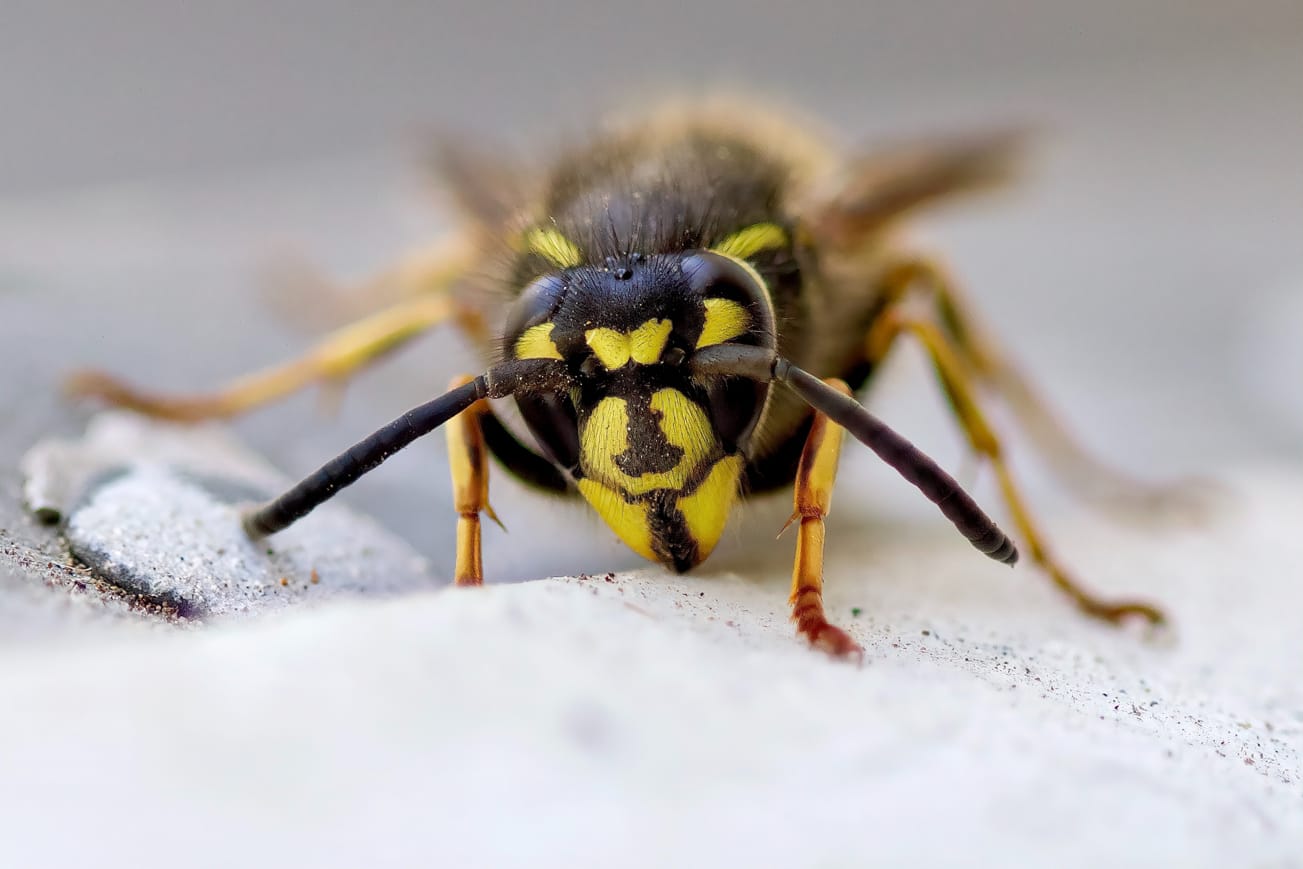
Contents

Going to a Michigan beach normally doesn’t come with a lot of natural nuisances. Of course, gulls will hover nearby or even harass you for some of your food, and perhaps some mosquitos will buzz around looking for a snack of their own. Maybe, albeit rarely, will you come across a wasp commonly referred to as the sand wasp.
Sand wasps differ greatly from the wasps that you might associate with living near your home. Just as the name implies, sand wasps belong to a large group of wasps called digger wasps. They prefer areas with sandy soil, meaning you are more likely to see them in sandy areas around the Great Lakes shores, and less likely to see them in your garden.
A couple different species of sand wasp exist, but the most common belong to a group of thick-waisted wasps with typical wasp-like markings. Their eyes look like those of a fly, big and pale. The sand wasp’s behavior is also very different from other social wasps. Wasps that we are more familiar with are the ones that are known for their aggressiveness, but sand wasps rarely sting, and will only sting if you threaten their nest.
Speaking of their nests, if you do see a sand wasp, it might not be for long. As phenomenal diggers, sand wasps can dig their way into the ground in a matter of seconds, exiting your sight almost as quickly as they entered. As long as you leave their nests undisturbed, they will treat you the same way.
Many of the pests that can spoil our plants and gardens are the ones that sand wasps prefer to catch. That means flies, caterpillars, and stink bugs are just a couple of their favored targets, where they will catch and bring back to the nest. Not only that, but the house flies that annoy us on a near daily basis are also some insects that the sand wasp will hunt.
When they bring these insects, back to the nest, they bring it back only for themself or their young. Again, sand wasps are not social wasps. The female sand wasp will dig her own nest as a singular tunnel with a chamber on the end. In that chamber she will lay up to 20 eggs. Those 20 larvae can consume up to 20 insects over several weeks, meaning the sand wasp is a very efficient and effective hunter.
While the sandy shores of a lake make a great home, it is not uncommon for a sand wasp to find another area with little vegetation. And while they may not be social, if conditions are right, then more sand wasps will move into a common area, still with individual nests.
We can be thankful that sand wasps have a different behavior than other wasps, and we can also be thankful for their ability to hunt the pests that can spoil our gardens. For more information on sand wasps or the other species of wasps that you might find around your home, especially for pest control, call Van Den Berge Pest Control today at 616-392-7367.
Trust the locally owned, widely renowned experts at Van Den Berge Pest Control for all of your pest needs. With over 100 years of combined experience throughout the Holland, MI-based pest control team, you know you’re in excellent hands with our state-certified experts.
Recent Posts
Comparing Termite Treatment Costs: A How-To Guide
When you’re faced with a termite infestation, understanding treatment costs is vital for effective management.
Understanding Exterminator Costs for Mosquito Control
Imagine you own a large backyard and decide to hire a mosquito exterminator. You might
What Are Average Exterminator Costs for Mosquito Control?
When it comes to mosquito control, understanding average exterminator costs is essential for effective management.
